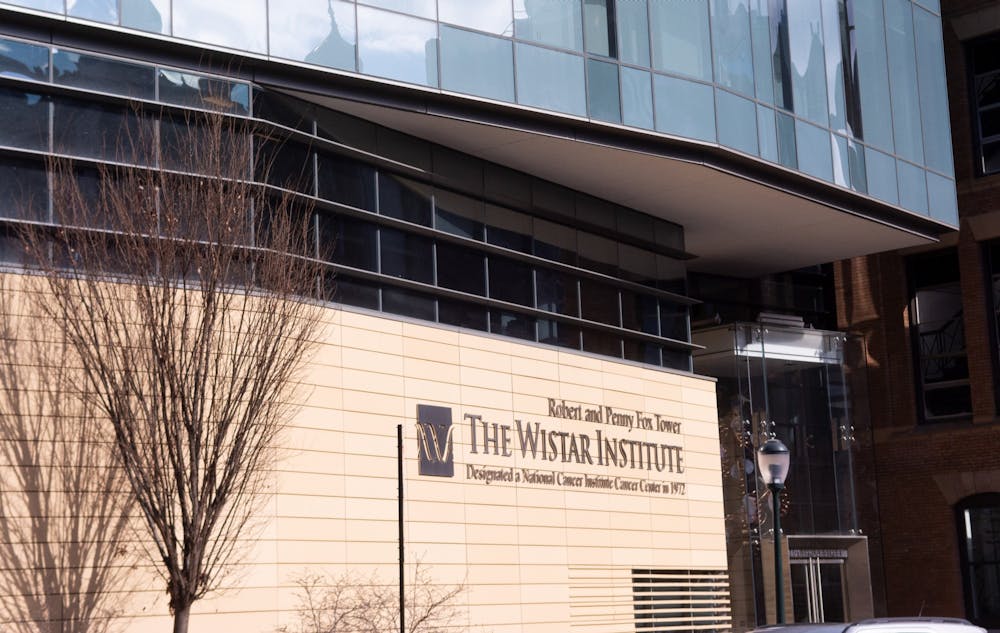With 11 coronavirus cases confirmed in the United States, the Wistar Institute is among the leading laboratories working to develop a vaccine for the virus.
The Wistar Institute announced its partnership with Inovio Pharmaceuticals on Jan. 23 to accelerate vaccine development for the recent coronavirus outbreak. The collaboration was backed by $9 million from the Coalition for Epidemic Preparedness Innovations, a global organization based in Norway.
David Weiner, the director of the Vaccine & Immunotherapy Center at the Wistar Institute, said Wistar was one of the three research groups funded by CEPI to develop the new vaccine. Along with the Wistar Institute, the University of Queensland, and vaccine-maker Moderna are the other grant recipients.
The Wistar lab has previously developed a new vaccine for the Zika and Ebola viruses using its synthetic DNA technology.
“This is really based on the studies we have already done and published here in Wistar,” Weiner said. “[Zika and Ebola] taught us a lot about rapidly responding to outbreaks,” Weiner added.
Weiner said the Wistar lab hopes to complete the new vaccine development in less than seven months.
The new strain of coronavirus is part of a large family of viruses that can be commonly found in many species of animals. The disease was first detected in Wuhan, China, with over 300 deaths and 17,000 reported cases of the coronavirus since then.
Known by the Centers for Disease Control and Prevention as the novel coronavirus, the new strain is likely to have originated from animals and been passed onto humans, Medical Director of the Department of Infection Prevention and Control at Children's Hospital of Philadelphia Julia Sammons said.
RELATED:
Despite no cases at Penn, U. is monitoring coronavirus and contacting susceptible students
Penn bars students from studying in China this semester following coronavirus outbreak
“There have been over the past decade or two, instances where there was a spillover event, from a virus from an animal reservoir that then was able to pass through humans – and that was the MERS coronavirus and the SARS coronavirus,” Sammons added.

The severe acute respiratory syndrome outbreak in 2002 resulted in over 8,000 reported infections and almost 800 deaths, while the Middle East Respiratory Syndrome outbreak resulted in close to 2,500 cases and over 850 deaths. SARS originated in China, and though MERS was first reported in Saudi Arabia, it was later found that the first known cases occurred in Jordan.
Sammons added that it is a “common phenomenon” for viruses originating from animals to develop new capabilities in infecting humans.
Penn Medicine professor Harvey Rubin said the new coronavirus has similar DNA sequences as the circulating SARS virus.
Rubin added one approach for the vaccine to combat the new coronavirus is to replace the genetic sequence on the virus that encodes for coronavirus' unique spike protein, which all strains of the virus use to enter new cells.
“A lot of people are looking to replace the so-called spike protein on the coronavirus,” Rubin added. “And now that the Chinese have very graciously shared the sequence [of the new coronavirus], the scientists can know exactly what codes they want to use and put into the vaccine strains.”
Penn Medicine professor Ebbing Lautenbach said the development of the coronavirus vaccine is progressing faster than most vaccines, but it is unlikely to be available to the public until early summer.
“[Developing a vaccine] requires identifying the gene sequences of the new virus and then going through all of the stages of testing of a potential vaccine,” Lautenbach said. “You then have clinical trials to see what is the effect of the vaccine on prevention of the disease.”
Lautenbach added that while there is a lot of focus on the novel coronavirus recently, influenza poses a much greater risk for people in the U.S.
“By far, there is a bigger risk in terms of both catching and getting ill from [the flu] for anyone in the United States right now, not the novel coronavirus,” Lautenbach said.
A previous version of this article incorrectly identified the the Wistar Institute as "Penn's Wistar Institute" in a photo caption. The Wistar Institute is an independent, non-profit biomedical research institute. The DP regrets this error.









